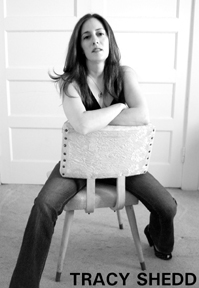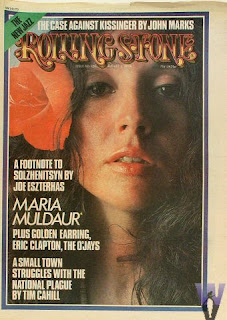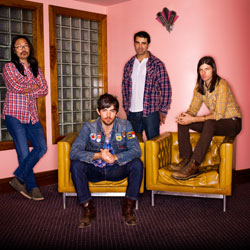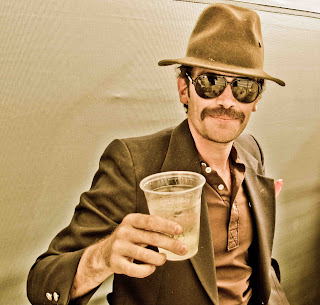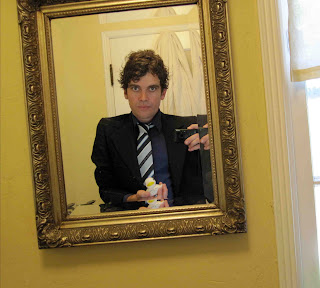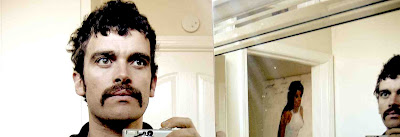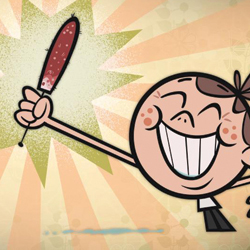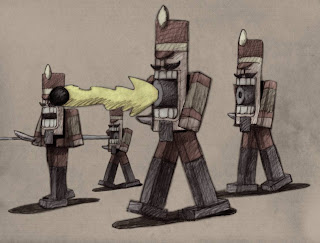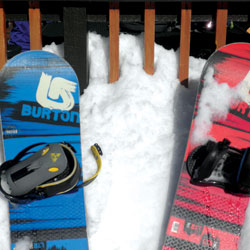Now’s the perfect time to wax up and dig into the powdery realms you’ll find at our higher elevations . . .
BEAR MOUNTAIN
The 2009-10 season at Bear Mountain Resort marked 20 years of progressive terrain park development. The resort, once called Goldmine before it merged with the other Big Bear ski resort (Snow Summit), is at the forefront of snowboard culture, allowing park designers carte blanche to build whatever they want to ride on.
Whether you’re jibbing an old jalopy, sliding across picnic tables or hitting the new $5,000 feature, the Paul Jam, a cascading stair step that looks like a huge Devo hat, you’re sure to have a blast. Bear Mountain offers SoCal’s only superpipe, plus a halfpipe and a beginner pipe to live out your Olympic dreams.
 |
| Chad Blau at Bear (Arrissia Owen Turner for Big Bear Grizzly) |
It’s no secret that Bear Mountain was home to über-boarder Shaun White, but these days you can still share the slopes with snowboarding greats like J.P. Walker and Mike Casanova, among others. Most weekends are host to contests and events of every kind.
Once upon a time, Snow Summit was the go-to resort for snowboarders. But once the merger occurred, Bear Mountain Resort became the destination for snowboarders and freestyle twin-tip skiers with its 748 total acreage; with 198 developed and 550 acres undeveloped in Deer, Goldmine and Bow canyons. The more advanced riders can hit the canyons to navigate between the trees when a good dump of natural snowfall occurs.
Bear Mountain is keeping a tight hold on their reputation as one of the most progressive snowboard parks in the U.S. The mountain is littered with more than 150 jumps and 80 jibs spread out among the 17,000 vertical feet of top-to-bottom terrain.
This season, the resort added the new Skill Builder Park in the beginner area with scaled-down features and DIY signs that spell out exactly how to raise the bar on your riding.
Bear Mountain boasts 12 lifts, with two high-speed chairs straight to the top. The highest elevation at Bear Mountain is a staggering 8,805 feet at Bear Peak, with about 17 ride-able miles across the resort. The longest run is Geronimo at 1.5 miles.
After covering the entire mountain, you’ll be ready for a cold one at the Beach Bar, an outdoor bar that overlooks The Scene and Central Park for plenty of entertainment. Why exert yourself when you can watch others from the comfort of the deck? Looking for warmth, Trappers Lounge is just a staircase away.
Bear Mountain Resort, 43101 Goldmine Dr., in the Moonridge area of Big Bear Lake, (909) 866-5766; www.bearmountain.com.
MT. BALDY
 |
| Suzy Chafee anyone? Hell yeah. |
Skiing Mt. Baldy resort is like jumping in a time machine, sans hot tub. Anyone with fond memories of long, straight skis, Boda bags, Led Zeppelin blaring and foxy babes in blue bibs can certainly appreciate the vibe at Baldy.
If it’s been decades since you’ve skied here, you’re in for a treat—it’s frozen in time. From the chair lifts to the faces of buildings, you’ll feel a little dazed and confused. Even the snowmobiles look circa 1983, but in the best way possible.
The resort opened more than half a century ago, starting with a Hudson engine and a bale of rope, developing into a full-service resort boasting six double black diamond runs. It’s no Mammoth, but when there is plenty of snow it’s epic.
First things first, you take a ski lift from the parking lot to the main part of the ski area. Once you arrive, you’ll find the rental shop, ski lesson sign-ups, the Notch Restaurant and the Mt. Baldy Yacht Club (Stella and Widmer on tap!), basket check, first aid and all the rugged terrain you can handle 25 minutes from Upland. At the end of the day, you can either ride the lift down to the parking lot or just go balls out and hit the moguls the entire way down.
Aside from the awesome aesthetics, something that makes Baldy special is that it faces south, which can be a real curse when you’re trying to maintain your snowpack. But it also offers one of the most impressive sunsets you’ll ever find.
The late sun reflects off Long Beach Harbor, magnifying the scene in a rare atmospheric condition. On a good day, you can actually make out the shape of sailboats. Squint past the fog and you can just make out Catalina Island.
The drive to Mt. Baldy is short and sweet, and with much fewer cliff drops from the side view window of your vehicle, but there are plenty of challenging slopes once you arrive.
The recent rains washed out part of the road after the mountain area received more than 25 inches of rain and three feet of snow, but county crews worked to keep the fun alive with the road to the resort is reopened with restrictions.
For the time being, skiers and snowboarders must arrive by 9 a.m. to avoid the uphill road closure, which enables the crews to continue the repairs. To ensure your spot on the mountain, make a reservation and print it out, or go to the resort’s website and print out the home page, which has a message about the road closure. Leave early and stay late. And don’t forget to fuel up. There are no gas stations once you pass Claremont or San Antonio Heights.
Mt. Baldy Resort is open 8 a.m. to 5 p.m. daily. Chairs 2 and 3 are open with a combined 1,250 vertical feet, with Chair 4 opening weather permitting. There is also a Monster Tubing Park available for those looking for speed without strapping in or clicking in. And if you’re just hanging out for the view, there is a pass available just to ride the first lift up to the main ski area.
On the way home, stop off at Mt. Baldy Lodge in the Village, a rustic bar and restaurant with plenty of grub and mountain men to chat up. Mt. Baldy Lodge also offers overnight lodging, as does Snow Crest Lodge.
Mt. Baldy Ski Resort is at 6700 Mt. Baldy Road, Mt. Baldy. From the 210 freeway, exit Mountain Avenue and head north. Mountain Avenue turns into Mt. Baldy Road. For more information or to purchase tickets, call (909) 982-0800 or visit www.mtbaldy.com.
SNOW VALLEY SKI RESORT
Snow Valley Ski Resort in Running Springs is sort of the stepchild to Big Bear’s two resorts, but it’s got that whole 30-minutes-closer-than thing going for it—and that’s 30 minutes without chain control, which usually sets up right after Snow Valley.
The resort is a perfect place for beginner and intermediate level skiers and snowboarders, and there are a few black diamond runs to keep their patient buddies satisfied. The trade off is that the lift ticket prices are much nicer on your wallet.
But don’t underestimate Snow Valley. The EDGE is a park with a tank jib, small flat rail, table and spine, with more features being added daily as the season kicks off. Once the snow starts dumping, two more terrain parks will open, the Rim Progression Park and Hideout Jib Park.
There are night sessions until 8 p.m. Lines can be long at lunch time, so consider brown bagging it or hitting up the chalet before or after chow hours. It’s all a bit primitive, but there’s a reason why.
The ski area started in 1924 with a sling lift, then called Fish Camp. By 1941, the ski resort took on the name Snow Valley Ski Resort, and by 1949 the resort installed its first chair lift. Jump to 1994, and snowmaking was added, and by 1996 the resort added an innovative snowboard park that flowed from hit to hit.
During the past summer, Snow Valley invested nearly a million dollars, upgrading ski and snowboard rental equipment along with a new computerized rental processing system. Chair 8 has been refurbished and will allow easier access from Slide Peak to the front of the mountain.
Snow Valley is close enough to make for an easy day trip, but for those looking to tuck in after a long day of boarding or skiing, there are lodges and hotels available in Running Springs or nearby Lake Arrowhead. Closest is Giant Oaks Lodge, minutes from the resort. For reservations, call (909) 786-1689. For more information about the area, visit www.runningsprings.com.
Snow Valley Ski Resort, 35100 Highway 18, Running Springs, (909) 867-2751; www.snow-valley.com.
SNOW SUMMIT RESORT
Snow Summit is the most visible ski resort in Big Bear Lake, just a jaunt up from Big Bear Boulevard and closer to the Village area with restaurants and bars. It’s family-friendly and offers myriad intermediate and beginner runs, along with the double diamonds for the more advanced skiers and snowboarders.
The resort offers 31 trails, 14 chairlifts, a 1.25-mile run and a snowmaking system that can convert up to 6,000 gallons of water per minute into snow when Mother Nature fails SoCal.
 |
| Kenny Milliken at Torchlight (AOT) |
The mature crowd can hit Snow Summit to escape the hot doggers that Bear Mountain caters to. The resort touts itself as the “Premier Mountain Resort Experience in Southern California,” with a more refined skiing experience offered. Night skiing is available many nights throughout the season, and New Year’s Eve boasts the annual Torchlight Parade that is always a sight to see.
At the top of Chair 1, the East Mountain Express, stop for a bit at the View Haus restaurant, which has a stunning view of San Gorgonio and some tasty barbecue grillin‘. Sit out on the oversized deck and order some pulled pork or a half-pound burger, grab a beer and you’re in nirvana.
For beginners, Snow Summit offers an exceptional ski school, with guaranteed results. If by the end of the lesson you can’t make your way down the beginner slope, you get to keep taking lessons until you can.
And if it’s your first time at Snow Summit but it’s looking awfully familiar, it might be memories from John Cusack and Chevy Chase flick Hot Tub Time Machine, which was partly filmed at the resort.
Snow Summit, 880 Summit Blvd., Big Bear Lake, (909) 866-5766; www.snowsummit.com. For lodging information in the area, visit www.bigbearinfo.com, www.bigbear.com or call (800)-4-BIGBEAR.
MOUNTAIN HIGH
Just a little ways from the Cajon Pass sits Mountain High Ski Resort in Wrightwood in the Angeles National Forest. More than 80 years ago, construction on the resort kicked off, back then called Big Pines, transforming the winter wonderland into a recreation destination.
By 1980, Mountain High merged with Holiday Hill and became a single resort, Mountain High Ski Resort. Now the resort offers 46 trails and 11 chair lifts, including the regions first high-speed detachable quad.
In 1997, the resort underwent a huge transformation, renovating everything from lifts to the grooming equipment. Since 2001, Mountain High has earned the title of most skier visits of all SoCal ski resorts. Most recently the resort remodeled the West Base area. It also increased its snowmaking by 30 percent.
Aside from the West and East resorts, Mountain High now offers the North Resort, with 70 acres of beginner terrain and the North Pole Tubing Park, SoCal’s largest tubing park. Formerly Ski Sunrise, the North Resort is located directly across from the West Resort and operates weekends through the peak season.
New for this season is the resort’s longest terrain park yet at 1.6 miles, located at the East Resort. The park will no doubt lure some riders to the east side, easing congestion on the main side of the resort.
Goldrush run on the east’s gradual pitch is perfect for features and offers better terrain for the park. The park includes banks, hips, jibs and jumps. There is also a second learn-to-ride zone at the top of East Resort perfect for beginners, which also includes a small BoarderCross course to get your speed on.
The West Resort upped its game, as well, adding a new stair feature in the Playground and a pipe jib designed and sponsored by Skullcandy. The new Skullcandy feature mimics an iPod docking station with built in speakers to rock your world.
Mountain High Winter Resort, 24510 State Highway 2, Wrightwood, (888) 754-7878; www.mthigh.com.

